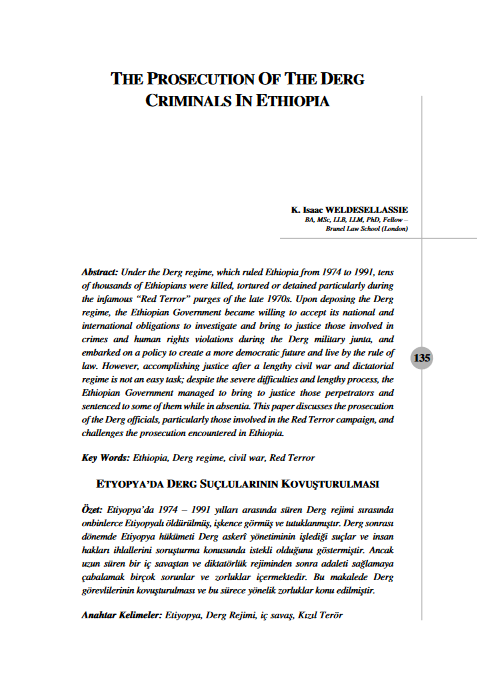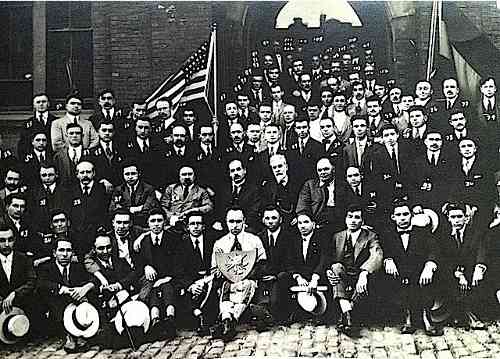
According to the reports published in the Armenian press, European Parliament (EP) is preparing to host an strange conference on 6 March 2019 titled “Armenophobia: historical and present-day resurgence” which is said to be hosted by the Greek Cypriot EP member Eleni Theocharous. It is mentioned in the reports that the said event is co-organized by the “European Armenian Federation for Justice and Democracy (EAFJD)” and the Tufenkian Foundation.[1]
The reports, in reference to the Facebook page of EAFJD, point out that “the conference will examine the phenomenon from different angles, provide a comprehensive picture of various interconnected aspects as well as the ways of combating it. It will be featuring prominent representatives of academia, including historians, political scientists, journalists, human rights defender/activists and witnesses.” The reports also spectacularly claim that “the subject of the conference is of particular significance” since breaking stereotypes, fighting hate speech, and xenophobia are indispensable for successful negotiations, dialogue and preparing the ground for sustainable, peaceful settlement of conflicts.
Per the said reports, the guest speakers of the conference include “publisher, human rights activist Ragıp Zarakolu, Professor at the Jagiellonian University of Krakow Jakub Osiecki, blogger, eyewitness Alexander Lapshin, ‘Artsakh Ombudsman’ Artak Beglaryan and lawyer, former ‘Artsakh ombudsman’ Ruben Melikyan”. From the information contained in his personal website we understand that Jakup Osiecki has a PhD degree with his thesis titled “Armenian Apostolic Church in Soviet Armenia 1920-1932”.[2] Whereas Alexander Lapshin is the Russian-Israeli blogger convicted and later released in Azerbaijan over a visit to Nagorno-Karabakh.[3]
What is EAFJD and who is Eleni Theocharous? What are they trying to do?
As it was mentioned in one of the AVİM commentaries of last year, the EAFDJ (which is affiliated with the Armenian Revoulationary Federation/the Dashnaktsutyun) presents itself as “a grassroots organization, representing the European citizens of Armenian origin” and asserts that “it is the main interlocutor promoting the Armenian issues in the European Union and international organizations, such as the Council of Europe and the OSCE”.[4] According to its website, EAFJD is” the European affiliate of the Armenian Cause Central Council, located in Yerevan, Armenia” and advocates “for the recognition of the Armenian Genocide and its condemnation by Turkey and European Parliaments as well as for the safety and the fundamental right of the people of Republic of Artsakh (Nagorno-Karabakh Republic) to determine their own present and future.”
In short, EAFJD is vested with the characteristics of a typical “front organization” or “front group” feeding from Turcophobia and openly engaging in activities against Turkey, Turks and all Turkish origin peoples.
As it was referred to in one of the AVİM commentaries of last year Eleni Theocharous “is a well-known figure in Armenia and the Armenian diaspora.”[5] In this context, according to European Armenian Federation for Justice and Democracy (EAFJD) web page, “Eleni Theocharous honored by the EAFJD for her lifelong dedication to the people of Artsak” on 26 October 2018 and EAFJD President Kaspar Karampetian participated in a ceremony honoring Eleni Theocharous “for her lifelong dedication to and work for the Armenian people”.[6] It is mentioned that the ceremony was organized in Nicosia by the three Armenian political parties.
Following is the EAFJD President Kaspar Karampetian’s introduction of Eleni Theocharous which speaks for itself for explaining the identity of this Armenophill person who seems to be more royalist than the king for the so-called Armenian cause most probably because of her Anti- Turkish sentiments:
“It was a great pleasure for me to honor Eleni Theocharous on behalf of the European Armenian Federation for Justice and Democracy. MEP Theocharous is much more than a European political leader who has shown interest in Armenia and Artsakh. She has dedicated her entire life to fight for the liberation of the Armenians in Artsakh and the international recognition of the Republic of Artsakh. In fact, when it comes to defending the fundamental rights of the people of Nagorno Karabakh she is a tireless activist. Eleni Theocharous is an outstanding lifelong defender of the Artsakh people and a true friend for all Armenians”
It is apparent that EAFJD and Eleni Theocharous meet on the common ground of Anti-Turkism and they together try to invent a new conception of “Armenophobia” in order to cover their hate based Turcophobia.
Operation Nemesis and ASALA murders: “If you ever meet a Turk, kill him”
Armenian-American writer Eric Bogossian in the introduction chapter of his book titled “Operation Nemesis. The Assassination Plot that Avenged the Armenian Genocide” states that “The stories would always end the same way. My grandfather would instruct me, ‘If you ever meet a Turk, kill him’ ”.[7]
This “revenge mentality”, in fact, is constructed upon the practices of primitive forms of punishment in the early periods of human society. It represents a primitive understanding of justice.
Along with this primitive understanding of justice, an assassination campaign by the Armenian Revolutionary Federation (ARF) carried out between 1920 and 1922 during which a number of Turkish and Azerbaijani political and military figures were assassinated. This insidious cowardly operation was named by the ARF after the Greek goddess of divine retribution Nemesis. Nearly 50 years after the “Operation Nemesis”, ASALA (the Armenian Secret Army for the Liberation of Armenia) and the Armenian Revolutionary Army, or Justice Commandos, a group believed to have been created by the ARF in response to ASALA had started the assassinations against Turkish diplomats and their families. In this terror campaign more than 35 Turkish diplomats, their wives and children had been murdered.
Eric Bogossian in his above-mentioned book evaluates the meaning of the “Operation Nemesis” in the following way:
“Though the men and women of Operation Nemesis broke the laws of man, they did so to bring some portion of sanity to an insane world. The unthinkable actually cannot be answered, but in the case of Armen Garo, Shahan Natali, Soghomon Tehlirian, and others, to act was the only way to continue living. Otherwise they too would have been consumed by the insanity…The Nemesis fedayeen did not see themselves as terrorists. From their point of view, their actions were driven by motives that far surpassed simple retribution or revenge. As holy warriors, they believed their domain to be spiritual, not political. Their job was to exact some fraction of justice. In other words, killing Talat Pasha, Djemal Pasha, Behaeddin Shakir, and Said Halim Pasha was an attempt to bring some kind of balance to the universe… That does not make what Operation Nemesis did legal.”[8]
After this evaluation Eric Bogossian also pertinently asks the following questions of which we, as the Center For Eurasian Studies, have been asking for years:
“My grandfather told me stories from his life. It was his gift to me. Memory lies at the center of the Nemesis story. It is the engine of an intense bloodlust. We remember, but we remember differently. Our respective narratives lead to different actions. Thus the conundrum of history. Were you there? Did you actually see it? Who told you about it? How can you be sure?”
The February 1992 Khojaly Massacre
In February 1992 a massacre was committed against the Azerbaijani population in the town of Khojaly by the Armenian armed forces. According to web site of the Ministry of Foreign Affairs of Azerbaijan, over the night from 25 to 26 February 1992 613 persons were killed, including 106 women, 63 children and 70 elderly people. 1,275 inhabitants were taken hostage, while the fate of 150 persons remains unknown to this day. In the course of the tragedy 487 inhabitants of Khojaly were severely maimed, including 76 children not yet of age. 6 families were completely wiped out, 26 children lost both parents, and 130 children one of their parents. Of those who perished, 56 persons were killed with especial cruelty: by burning alive, scalping, beheading, gouging out of eyes, and bayoneting of pregnant women in the abdomen.[9]
Thousands of Armenians who come to Turkey for a better life
It is reported in the international press that “tens of thousands of Armenians have come to Turkey illegally for work.”[10] Their numbers are estimated around 100.000.[11]
A recent report on Armenian labor migrants in İstanbul explains the “Motivation for Choosing Turkey” as follows:
“Despite the fact that Turkey, as a destination, does not appear often in the discourse of contemporary Armenian migration, it is true that a sizable number of Armenian labor migrants choose Turkey as their destination. The reasons for choosing Turkey are various, the most common ones being the geographical proximity and affordability of the travel, as well as ease of entry in Turkey (tourist visas issued on the border or online).
The abovementioned reasons also feed the motives of those who intend to migrate temporarily. It is easy to make a decision to migrate temporarily when the move does not require traveling long distances or paying large expenses. Thus, if not wanting to stay in Turkey longer, the migrants do not have to “sacrifice” much or bear big losses of resources.
Another trigger for choosing Turkey is the existing cultural and community ties. Certainly some cultural norms in Armenia and Turkey are similar, or, if not acceptable, these norms are at least understandable for Armenians, such as attitude towards elderly, behavior in public, etc. Another trigger is Bolsahay (Bolsahay is a term often used to refer to Istanbulite Armenians) community's presence, which provides a huge social anchor and resources for the arriving migrants.
Last but not least, Turkey is often chosen an alternative destination to Russia. Indeed, Russia remains the main destination for the majority of Armenian migrants; however, those who do not want to migrate to Russia often turn to Turkey.”[12]
As far as Turkey is concerned, the above quoted passage from the recent report on Armenian Migrant Labor in Turkey openly contradicts with the present day Armenophobia claims.
Conclusion
If a person embarks on a journey of revenge on the basis of the personal narratives of his ancestors, he can turn to the idea of personal justice without questioning and understanding the true causes of what has happened in the past. This is a kind of blood feud understanding and typical example of primitive justice. This would inevitably create a hardened new generations on the other side of the equation. Eric Bogossian is stating that “But ASALA and the Justice Commandos had fallen into disarray on their own, and by the early 1990s, they were no longer active. Nonetheless, many members of the Turkish diplomatic corps had become hardened by the killing of their colleagues. Most people in Turkey had forgotten the crimes of their elders, but a new generation of Turkish officials would never forget the Armenian terror actions of the 1970s and 1980s.”[13]
Advocates of revenge should not forget that those who sow the wind may reap the whirlwind.
*Photo:https://ovenk.com
[1] “European Parliament to Host Conference on Armenophobia in March,” Panorama, March 20, 2019, https://www.panorama.am/en/news/2019/02/20/European-Parliament-Armenophobia/2075444.
[2] Osiecki Jakub, “Curriculum Vitae” (Academia, n.d.), http://uj-pl.academia.edu/JakubOsiecki/CurriculumVitae.
[3] Barak Ravid, “Israeli Blogger Alexander Lapshin Lands in Israel After Being Pardoned by Azerbaijan,” Haaretz, September 14, 2017, sec. Israel News, https://www.haaretz.com/israel-news/.premium-israeli-blogger-alexander-lapshin-lands-in-israel-after-being-pardoned-by-azerbaijan-1.5450805.
[4] Teoman Ertuğrul Tulun, “Visit of Swedısh Member of the European Parliament to Karabakh: Forgotten Misery of Azerbaijanis,” Center For Eurasian Studies (AVİM), February 15, 2018, 2018/8 edition, sec. Commentary, https://avim.org.tr/en/Yorum/VISIT-OF-SWEDISH-MEMBER-OF-THE-EUROPEAN-PARLIAMENT-TO-KARABAKH-FORGOTTEN-MISERY-OF-AZERBAIJANIS.
[5] Hazel Çağan Elbir, “A Visit from the European Parliament to the So-Called State in Nagorno – Karabakh under Occupation,” October 23, 2018, 2018/57 edition, sec. Commentary, https://avim.org.tr/en/Yorum/A-VISIT-FROM-THE-EUROPEAN-PARLIAMENT-TO-THE-SO-CALLED-STATE-IN-NAGORNO-KARABAKH-UNDER-OCCUPATION.
[6] “MEP Theocharous Honoured by the EAFJD for Her Lifelong Dedication to the People of Artsakh” (European approach to Armenian issues, October 28, 2018), http://www.eafjd.eu/honouringTheokharous.html.
[7] v Eric Bogossian, Operation Nemesis. The Assassination Plot That Avenged the Armenian Genocide., 1st ed. (Little Brown and Company, 2015).
[8] Bogossian, 301–3.
[9] “Khojaly Genocide” (Ministry of Foreign Affairs of Azerbaijan, 2008), http://mfa.gov.az/en/content/850.
[10] Umut Urras, “Armenian Immigrants Look for a Better Life in Turkey,” Al Jazeera, April 20, 2015, sec. Politics, https://www.aljazeera.com/news/2015/04/armenian-immigrants-life-turkey-150420070803126.html.
[11] Adam Gabbat, “Turkish PM Threatens to Expel 100,000 Armenians over Genocide Vote,” Guardian, March 18, 2010, sec. Turkey, https://www.theguardian.com/world/2010/mar/18/turkey-threatens-expel-armenians-genocide.
[12] Irena Grigoryan, “Armenian Labor Migrants in Istanbul:Reality Check” (İstanbul: Migration Research Center at Koc University, October 7, 2018), 12, https://mirekoc.ku.edu.tr/wp-content/uploads/2018/10/Report_Armenian-Labor-Migrants-in-Istanbul.pdf.
[13] Bogossian, Operation Nemesis. The Assassination Plot That Avenged the Armenian Genocide., 297–98.
© 2009-2025 Center for Eurasian Studies (AVİM) All Rights Reserved
No comments yet.
-
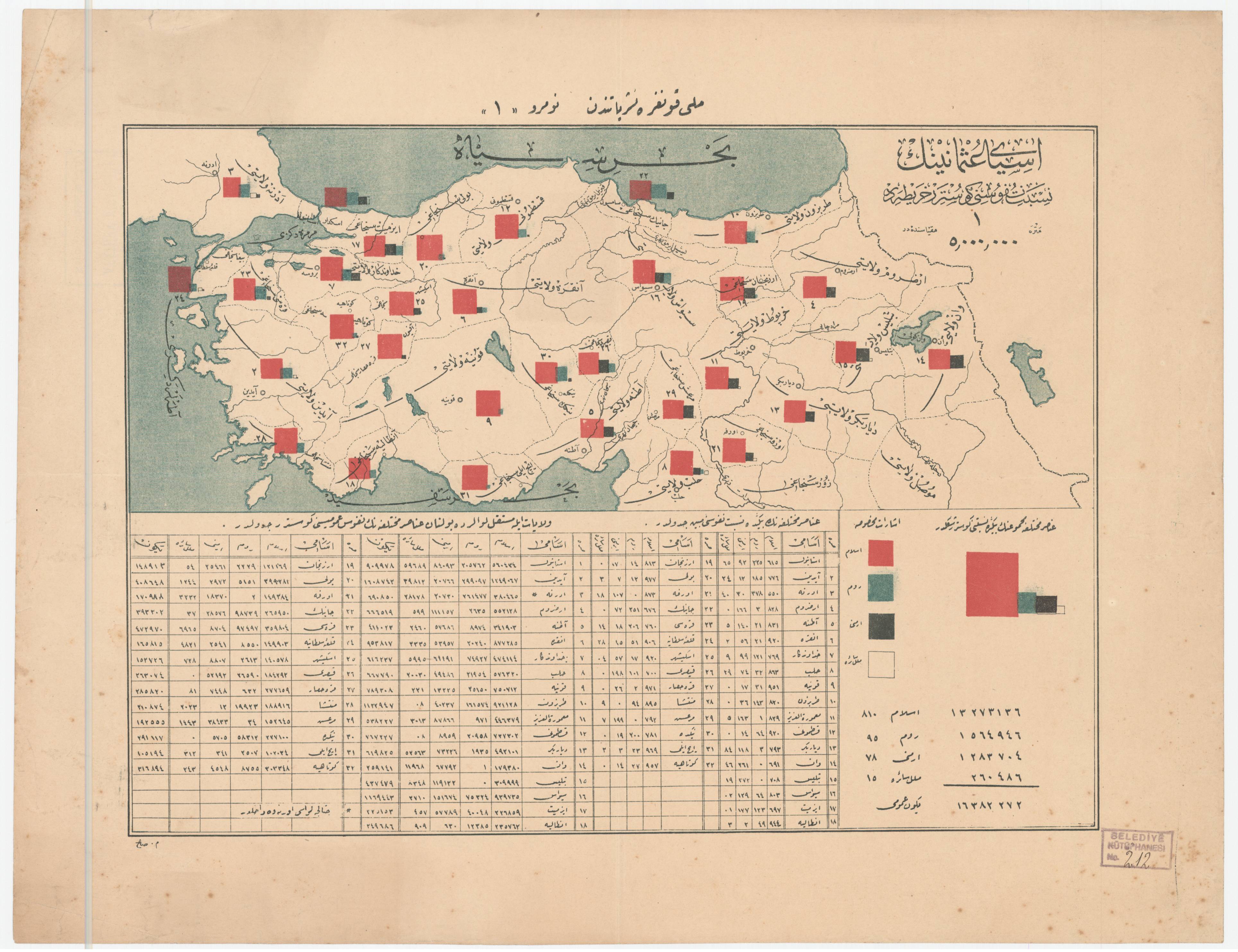 STATISTICAL INFORMATION REGARDING OTTOMAN ARMENIANS AND FOREIGN RESOURCES
STATISTICAL INFORMATION REGARDING OTTOMAN ARMENIANS AND FOREIGN RESOURCES
AVİM 25.10.2021 -
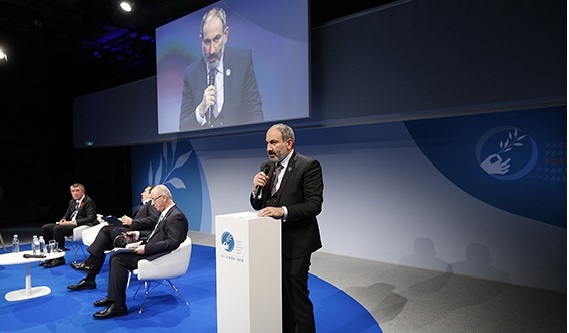 NİKOL PASHİNYAN’S SPEECH IN THE WORLD WAR I ARMISTICE EVENT REVEALS HIS INTENTIONS REGARDING 1915 EVENTS
NİKOL PASHİNYAN’S SPEECH IN THE WORLD WAR I ARMISTICE EVENT REVEALS HIS INTENTIONS REGARDING 1915 EVENTS
AVİM 19.12.2018 -
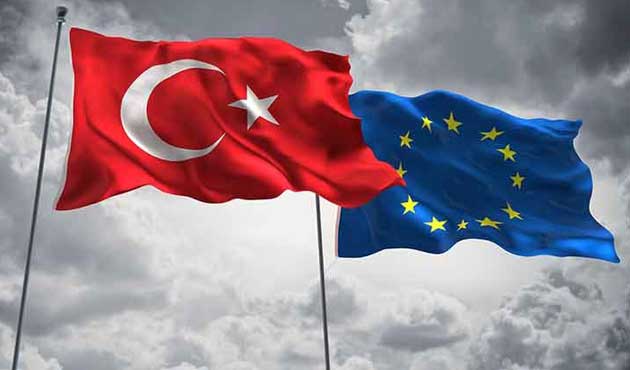 EU'S INCORRIGIBLE BIAS AND ANTAGONISM AGAINST TURKEY HAS BEEN REVEALED
EU'S INCORRIGIBLE BIAS AND ANTAGONISM AGAINST TURKEY HAS BEEN REVEALED
AVİM 21.09.2020 -
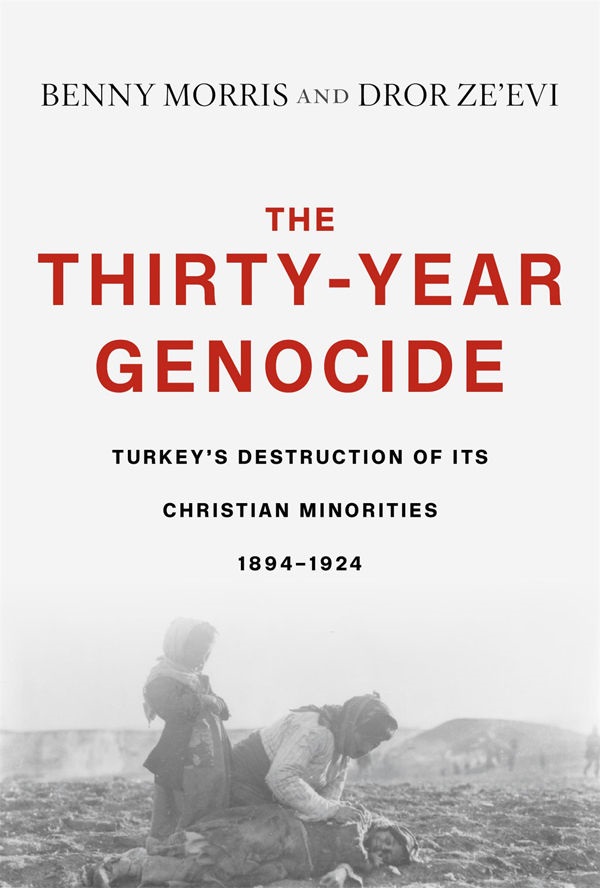 BOOK REVIEW: THE THIRTY-YEAR GENOCIDE
BOOK REVIEW: THE THIRTY-YEAR GENOCIDE
AVİM 21.08.2019 -
 ARMENIAN JOURNEY FROM “OPERATION NEMESIS”, ASALA MURDERS AND KHOJALY MASSACRE TO PRESENT DAY “ARMENOPHOBIA” FABRICATION
ARMENIAN JOURNEY FROM “OPERATION NEMESIS”, ASALA MURDERS AND KHOJALY MASSACRE TO PRESENT DAY “ARMENOPHOBIA” FABRICATION
AVİM 06.03.2019
-
 NUCLEAR THREAT IN THE SOUTH CAUCASUS; METSAMOR TO CONTINUE OPERATING
NUCLEAR THREAT IN THE SOUTH CAUCASUS; METSAMOR TO CONTINUE OPERATING
Özge Nur ÖĞÜTCÜ 20.10.2016 -
 NO PAROLE FOR THE ASSASSIN OF TURKISH DIPLOMAT
NO PAROLE FOR THE ASSASSIN OF TURKISH DIPLOMAT
Hazel ÇAĞAN ELBİR 02.06.2020 -
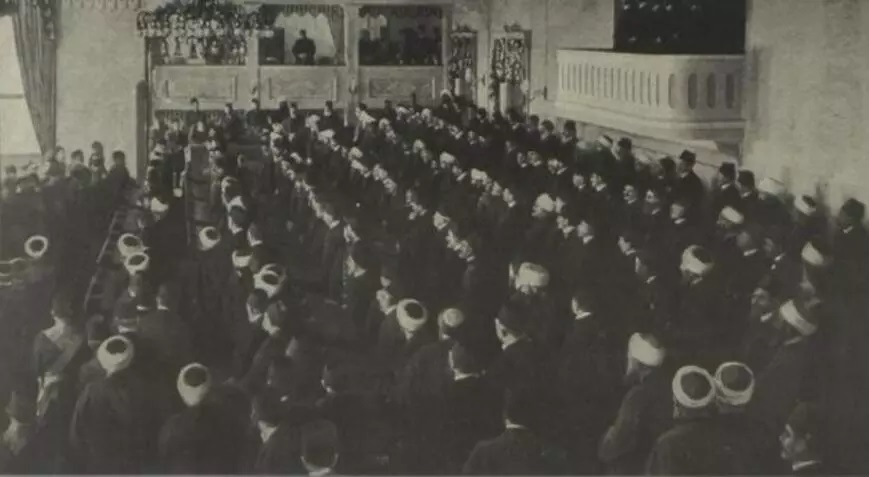 AN ARMENIAN NARRATIVE THAT CANNOT BE TRUSTED
AN ARMENIAN NARRATIVE THAT CANNOT BE TRUSTED
Yiğit ALPOGAN 13.04.2023 -
 THE EU’S FIRST SERIOUS CENTRAL ASIA INITIATIVE
THE EU’S FIRST SERIOUS CENTRAL ASIA INITIATIVE
Hazel ÇAĞAN ELBİR 15.04.2025 -
 ARMENIAN JOURNEY FROM “OPERATION NEMESIS”, ASALA MURDERS AND KHOJALY MASSACRE TO PRESENT DAY “ARMENOPHOBIA” FABRICATION
ARMENIAN JOURNEY FROM “OPERATION NEMESIS”, ASALA MURDERS AND KHOJALY MASSACRE TO PRESENT DAY “ARMENOPHOBIA” FABRICATION
AVİM 06.03.2019
-
25.01.2016
THE ARMENIAN QUESTION - BASIC KNOWLEDGE AND DOCUMENTATION -
12.06.2024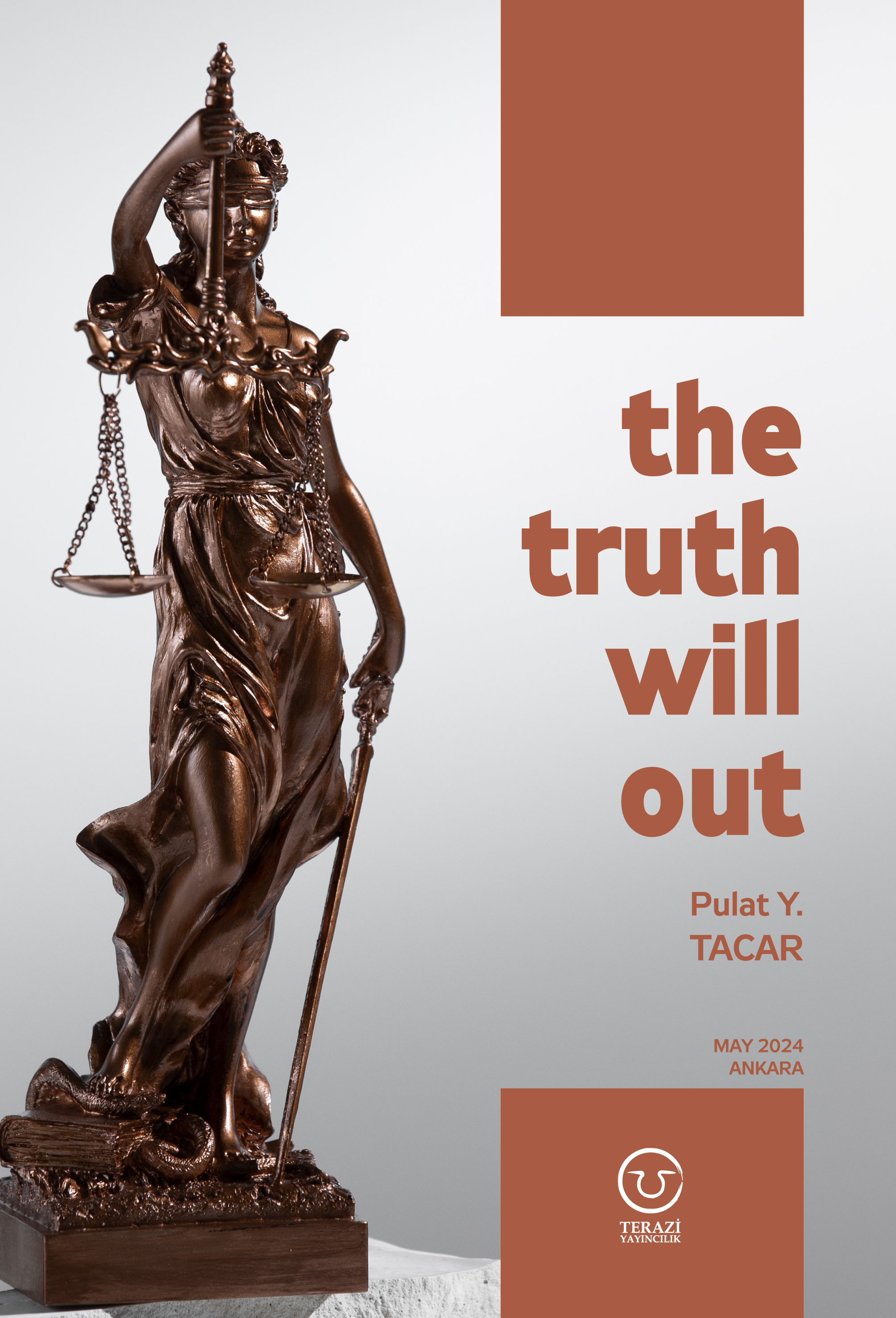
THE TRUTH WILL OUT -
27.03.2023
RADİKAL ERMENİ UNSURLARCA GERÇEKLEŞTİRİLEN MEZALİMLER VE VANDALİZM -
17.03.2023
PATRIOTISM PERVERTED -
23.02.2023
MEN ARE LIKE THAT -
03.02.2023
BAKÜ-TİFLİS-CEYHAN BORU HATTININ YAŞANAN TARİHİ -
16.12.2022
INTERNATIONAL SCHOLARS ON THE EVENTS OF 1915 -
07.12.2022
FAKE PHOTOS AND THE ARMENIAN PROPAGANDA -
07.12.2022
ERMENİ PROPAGANDASI VE SAHTE RESİMLER -
01.01.2022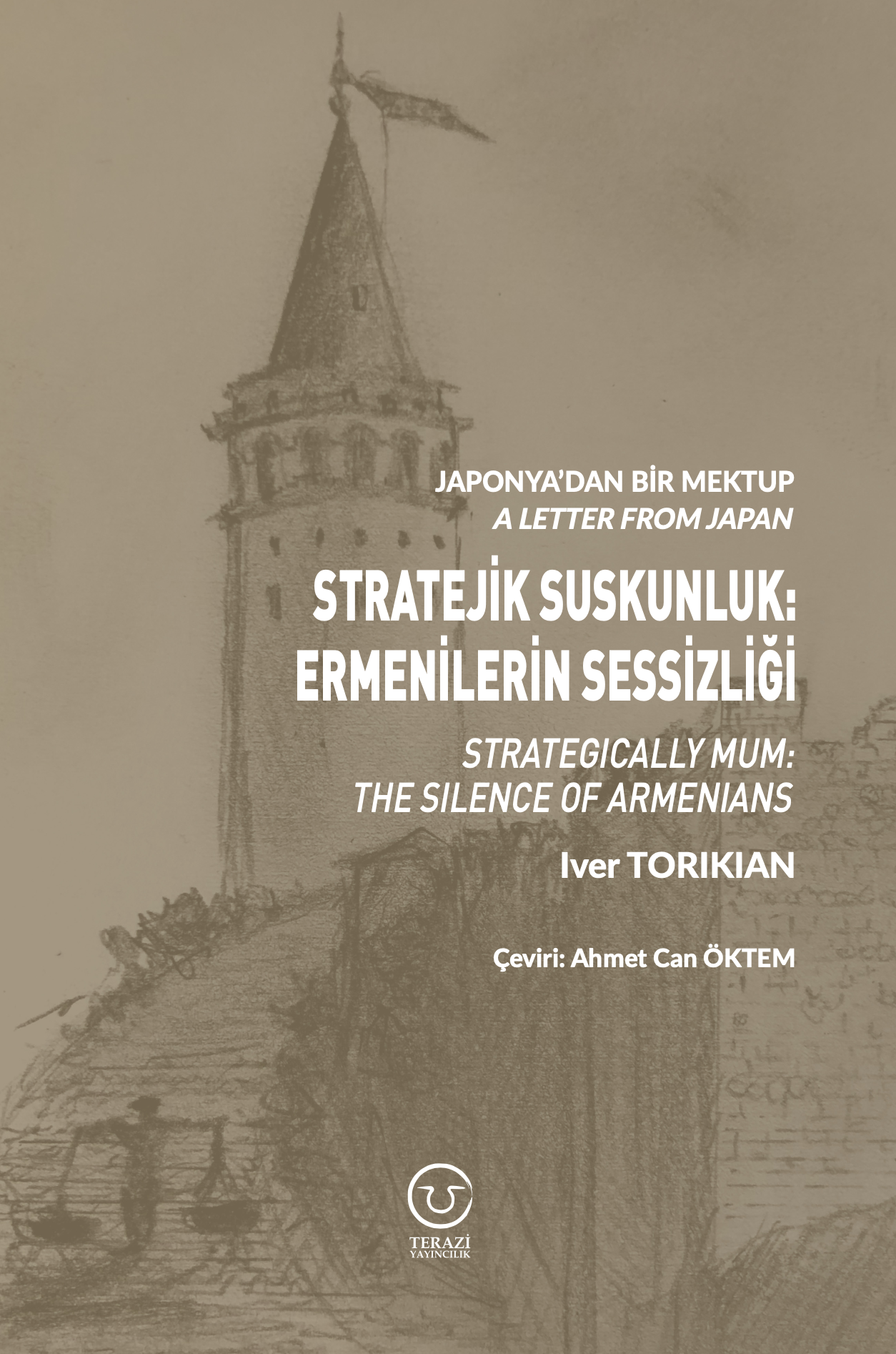
A Letter From Japan - Strategically Mum: The Silence of the Armenians -
01.01.2022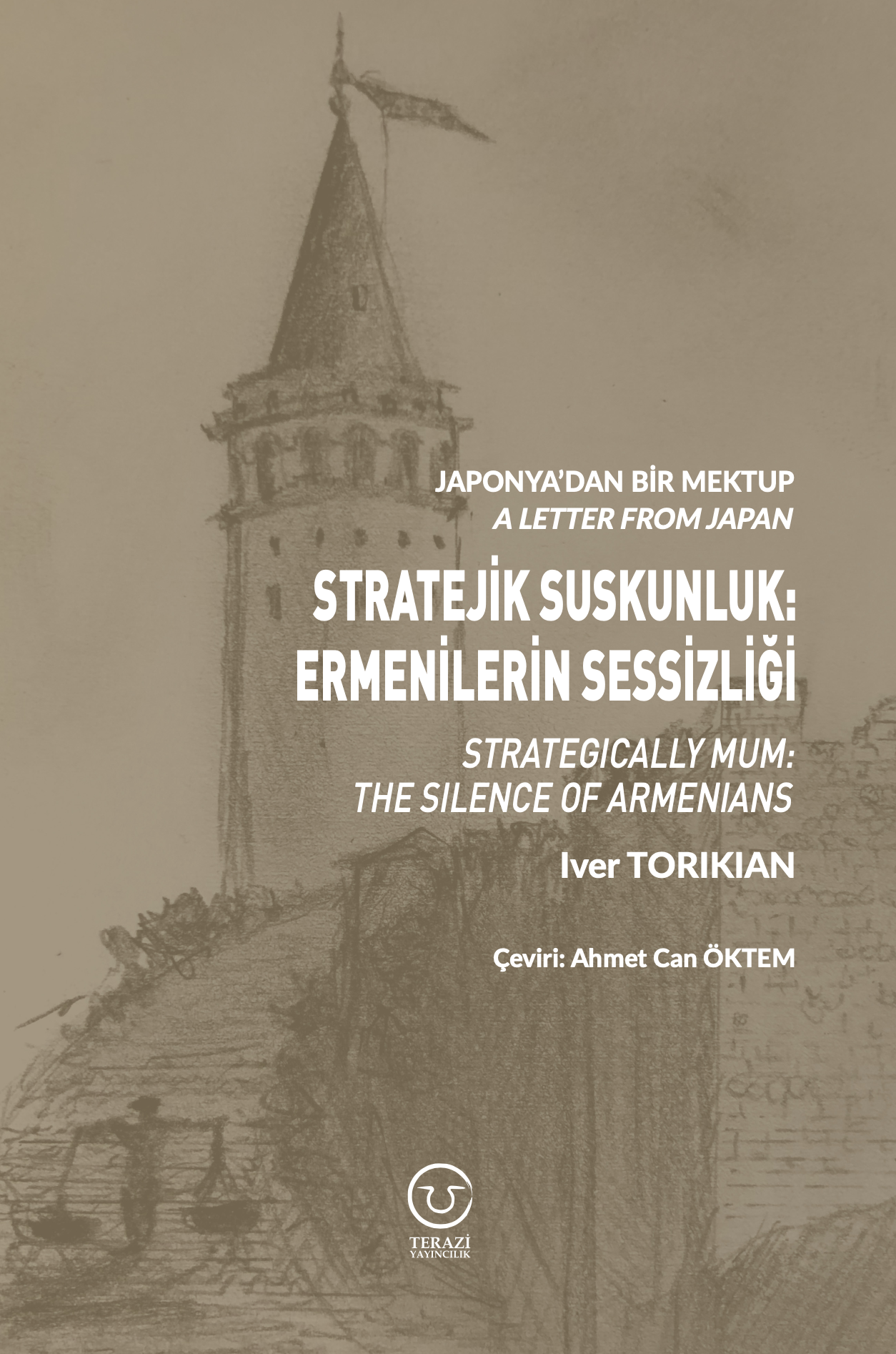
Japonya'dan Bir Mektup - Stratejik Suskunluk: Ermenilerin Sessizliği -
03.06.2020
Anastas Mikoyan: Confessions of an Armenian Bolshevik -
08.04.2020
Sovyet Sonrası Ukrayna’da Devlet, Toplum ve Siyaset - Değişen Dinamikler, Dönüşen Kimlikler -
12.06.2018
Ermeni Sorunuyla İlgili İngiliz Belgeleri (1912-1923) - British Documents on Armenian Question (1912-1923) -
02.12.2016
Turkish-Russian Academics: A Historical Study on the Caucasus -
01.07.2016
Gürcistan'daki Müslüman Topluluklar: Azınlık Hakları, Kimlik, Siyaset -
10.03.2016
Armenian Diaspora: Diaspora, State and the Imagination of the Republic of Armenia -
24.01.2016
ERMENİ SORUNU - TEMEL BİLGİ VE BELGELER (2. BASKI)
-
AVİM Conference Hall 24.01.2023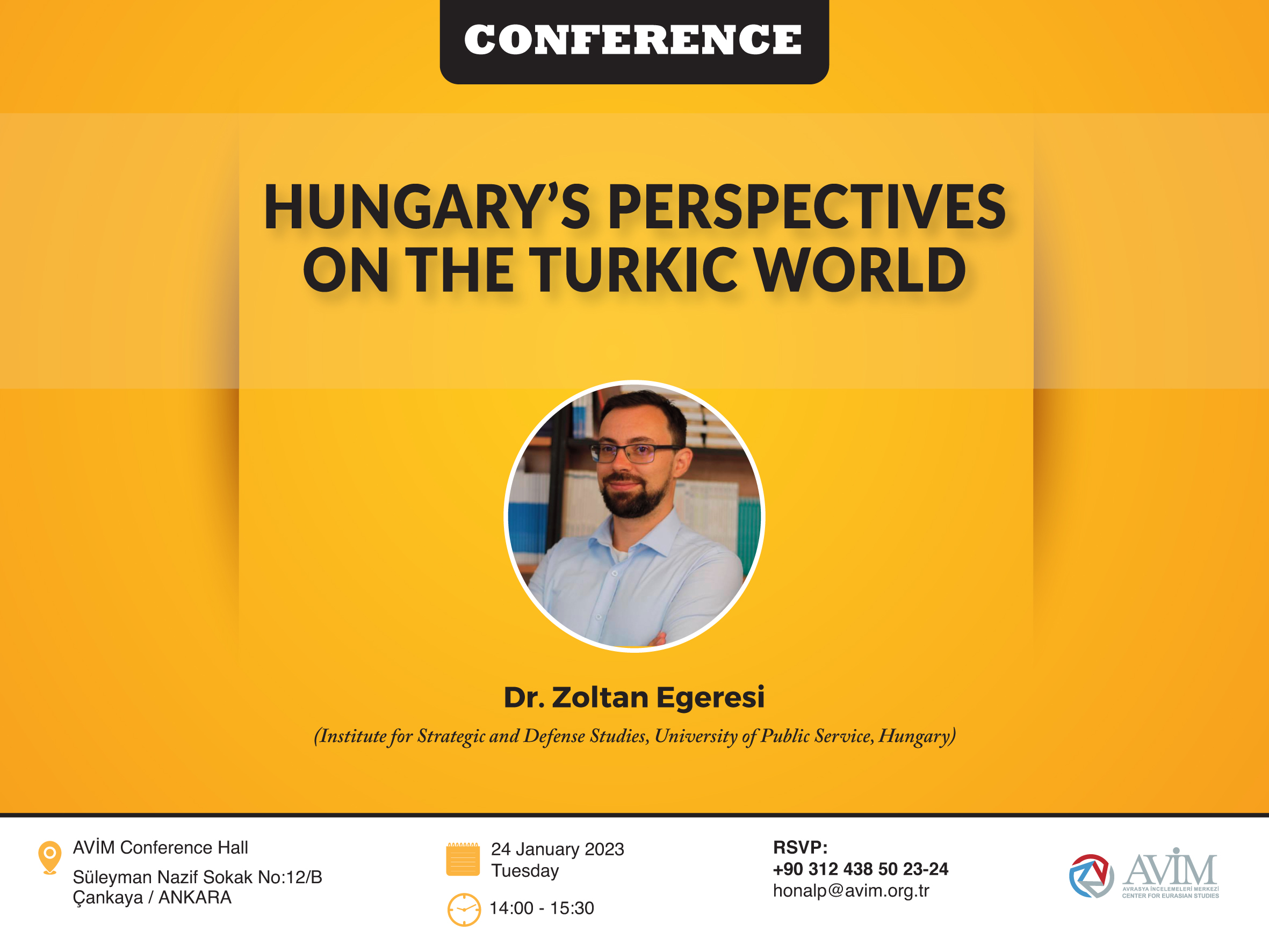
CONFERENCE TITLED “HUNGARY’S PERSPECTIVES ON THE TURKIC WORLD"








